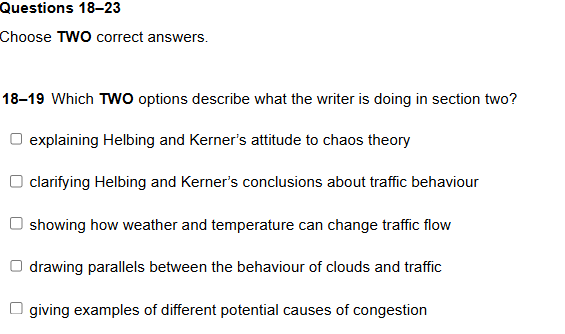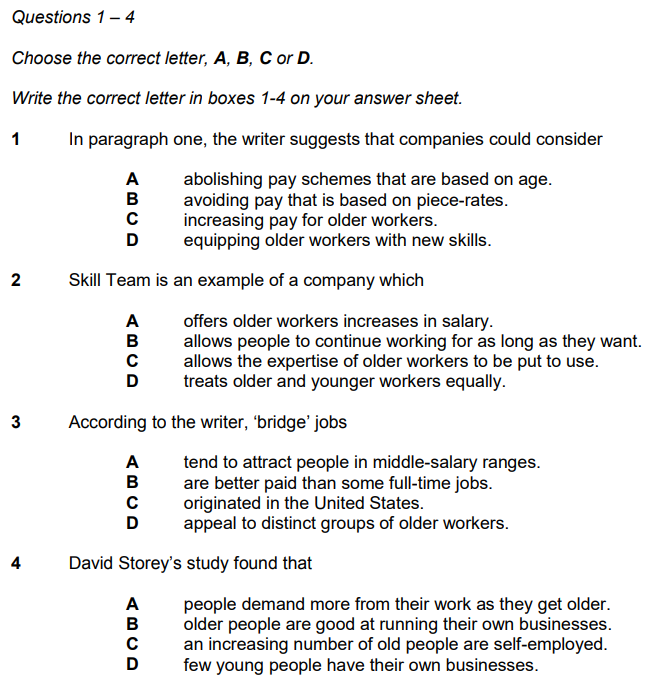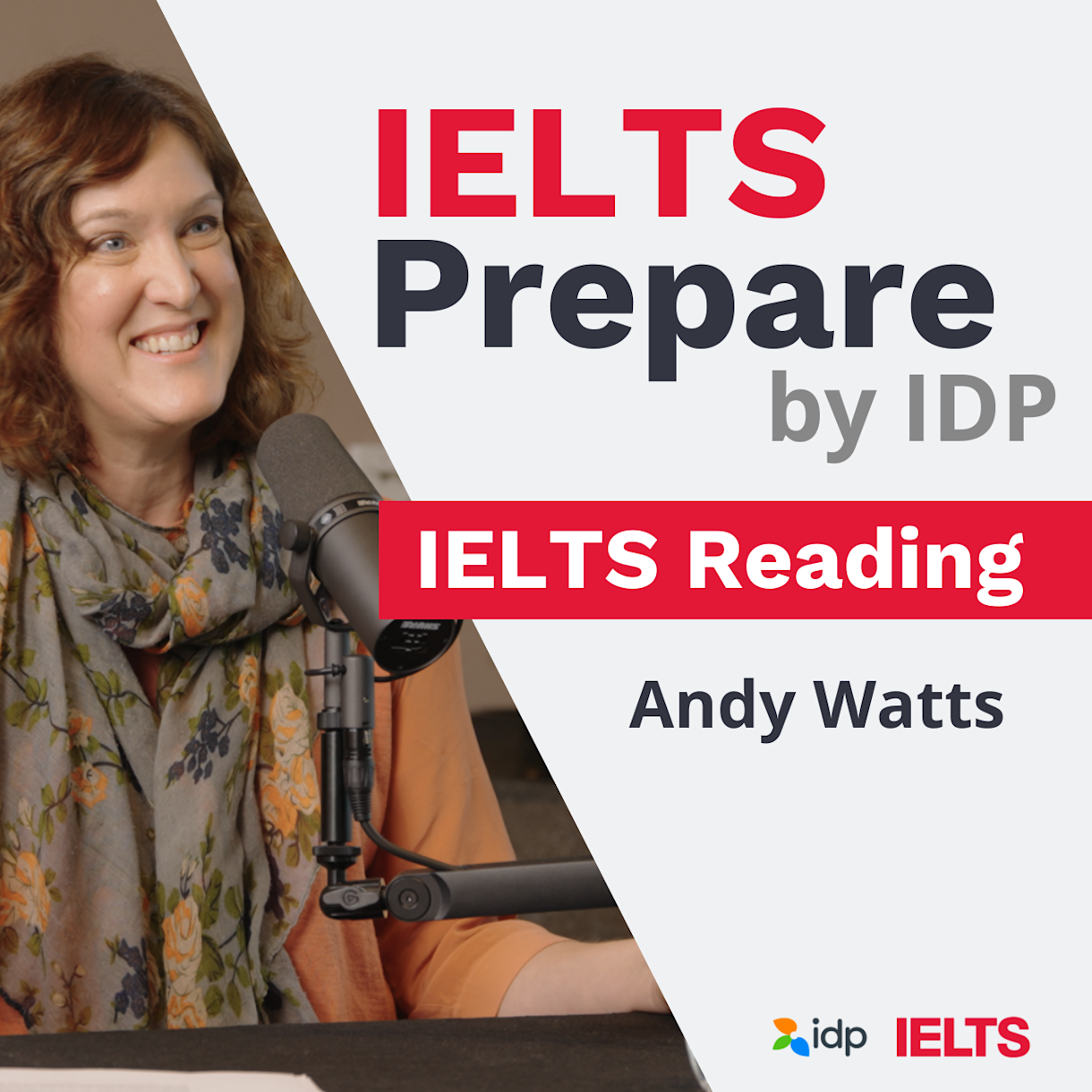Multiple-choice questions in the IELTS Reading test can seem straightforward at first. After all, you’re given a list of answers to choose from.
However, you need to read carefully as several options can look correct. The reading text may include words or phrases from the incorrect options to test your attention to detail.
Multiple-choice questions are a great opportunity to refine your skill of reading carefully and critically, skills that are crucial when you encounter academic texts at university or read workplace documents or reports.
In this guide, you’ll learn step-by-step strategies to tackle IELTS Reading multiple-choice questions. We’ll take you through an example and you’ll have the opportunity to try practice questions so you can approach test day with confidence.
What are IELTS Reading multiple-choice questions?
In the IELTS Reading test, you might get a question with four options or an unfinished sentence with four possible endings. You will be asked to choose the one correct answer (A, B, C, or D).
Sometimes the list is longer, and you need to choose more than one answer—so always read the instructions carefully to check how many answers you need.
The questions always follow the same order as the text.
Example of IELTS Reading Multiple choice (more than one answer) from a computer-based IELTS Academic test

Source: The official IELTS Familiarisation test
Common challenges with multiple-choice questions
Before we begin, let’s look at some common difficulties test takers face when answering multiple-choice questions.
Missing important details because they read the text too quickly.
Being sidetracked by distractors (answers that look like they might be correct but are not).
Spending too much time on one question and later running out of time.
If you struggle with any of these, don’t worry. In the next part of this guide, we’ll look at some simple strategies you can use to overcome these challenges.
Step-by-step strategy to answer IELTS Reading multiple-choice questions
In the question below, you’re asked to read a passage about older people in the workforce. Let’s look at the steps you can take so you can approach multiple-choice questions with confidence.

Source: Free IELTS Academic Reading sample preparation questions (IELTS on paper)| IDP IELTS
Step 1: Read the question carefully
How many correct answers do they need to choose? One or more than one?
Highlight or underline keywords in the question and answer stems.
Think of synonyms/paraphrases for keywords.
We know from the instructions in the sample question that we need to choose one correct answer only. Let’s look at question 3 as an example. You might underline the following keywords:
According to the writer, ‘bridge’ jobs:
A tend to attract people in middle-salary ranges.
B are better paid than some full-time jobs.
C originated in the United States.
D appeal to distinct groups of older workers.
Can you think of any synonyms for these underlined words?

Possible synonyms for keywords |
|---|
Attract = appeal to, interest People = individuals, workers, men, women Middle-range salary = mid-range salary, median salary, average salary Better paid = paid more, higher paid, receive higher salaries Full time jobs = full time work, full time positions, 9-to-5 jobs Originated = started in, began in, first appeared in The United States = America, the US, North America Appeal to = attract, interest Distinct groups= different groups, different types Older workers = senior employees, mature workers, workers in the fifties and sixties, employees over 55 |
Step 2: Scan for location in the passage
Scanning is reading quickly to find specific details within the passage.
Scan the text for the keywords you’ve highlighted in the question and answer stems.
Highlight these keywords in the text.
Also highlight any synonyms of these words that you notice.
Quickly read the paragraph below. Underline any keywords or their synonyms.
The best way to tempt the old to go on working may be to build on such ‘bridge’ jobs: part-time or temporary employment that creates a more gradual transition from full-time work to retirement. Studies have found that, in the United States, nearly half of all men and women who had been in full-time jobs in middle age moved into such ‘bridge’ jobs at the end of their working lives. In general, it is the best-paid and worst-paid who carry on working. There seem to be two very different types of bridge job-holder – those who continue working because they have to and those who continue working because they want to, even though they could afford to retire.
© The Economist Newspaper Limited, London, 1999

The best way to tempt the old to go on working may be to build on such ‘bridge’ jobs: part-time or temporary employment that creates a more gradual transition from full-time work to retirement. Studies have found that, in the United States, nearly half of all men and women who had been in full-time jobs in middle age moved into such ‘bridge’ jobs at the end of their working lives. In general, it is the best-paid and worst-paid who carry on working. There seem to be two very different types of bridge job-holder – those who continue working because they have to and those who continue working because they want to, even though they could afford to retire.
Step 3: Read in detail to eliminate distractors
After scanning to find the right section of the text, read that whole part carefully and look at every choice.
Eliminate any answers that you know are wrong – this will make it easier to find the right answer.
Take care: Avoid choosing an answer simply because it contains a word from the text. Focus on the idea and the context, not just the vocabulary.
Let’s look at the sample question and paragraph again. Are there any distractors? What do you think is the correct answer?
The best way to tempt the old to go on working may be to build on such ‘bridge’ jobs: part-time or temporary employment that creates a more gradual transition from full-time work to retirement. Studies have found that, in the United States, nearly half of all men and women who had been in full-time jobs in middle age moved into such ‘bridge’ jobs at the end of their working lives. In general, it is the best-paid and worst-paid who carry on working. There seem to be two very different types of bridge job-holder – those who continue working because they have to and those who continue working because they want to, even though they could afford to retire.


The correct answer is D.
Instead of ‘distinct groups’, the writer paraphrases this as “There seem to be two very different types of bridge job-holder" in the text.
The United States is mentioned, but the text only states that the studies were carried out there. Similarly, the word ‘middle’ in the text is also a distractor. If we read the whole sentence, we realise it’s referring to people who are middle-aged, not people who are in the middle-salary ranges. Full-time jobs are also mentioned in the first part of the paragraph, but there is no information about them being better paid.
Step 4: Manage your time
The IELTS Reading test lasts for one hour. In that time, you’ll need to read three passages and answer 40 questions. The texts become more challenging as you progress through the test, so it’s important not to spend too long on one question.
If you can’t find the answer to a question, move on and come back to it later.
If you’re still not sure later, take a guess. You won’t lose a point if it is wrong, but you might just gain one.
IELTS Reading Multiple choice practice
Multiple-choice questions are all about reading carefully and thinking critically. The more you practise, the more confident you’ll become.
Key takeaways
Let’s do a quick recap:
1. Start by reading the question carefully.
2. Scan for keywords to find the right part of the text.
3. Read the relevant section in detail to rule out distractors.
4. Keep an eye on the clock so you stay on track.
Test yourself
Try these strategies on one of the practice questions below and see how many more answers you get right.
IELTS Academic Reading sample questions
IELTS General Training Reading: Multiple Choice
Remember, you’re not just preparing for a test—you’re preparing for a new chapter in your life. Every minute you spend improving your listening skills brings you closer to feeling confident and capable in real-world English settings.
Ready to take the next step?
